
Tires have an incredible influence over a mountain bike’s ride feel and performance. While tires aren’t cheap, for many a tire change can be one of the most cost-effective ways to upgrade a bike. Singletracks has tested 70+ mountain bike tires over the years to help you narrow down the right choice for your bike and style of riding whether it’s trails, gravel, or even snow.
The following tires are some of our favorites organized into categories including trail, gravity, XC and gravel, and fat biking. We’ll also share background information we’ve collected over the years from tire experts to help you choose the best tire.
- Best MTB front tire: Maxxis Minion DHF
- Best MTB rear tire: Continental Kryptotal Re
- Best tire for muddy / wet conditions: Schwalbe Magic Mary
- Best gravel bike tire: WTB Venture Runner up: WTB Raddler
Submit your vote to see the results of our reader tire survey.
Reader response
- 2024 best mountain bike tire (front): Maxxis Minion DHF
- 2024 best mountain bike tire (rear): Continental Kryptotal Re and Maxxis Minion DHR II (tie)
Trail and all-around MTB tires
Trail tires blend grip, traction, and cornering control with mid-weight construction for great performance in most conditions. For this reason these tires are also referred to as “all-rounders.”

Maxxis Minion DHF
- Price: $90 (varies)
- Buy from Jenson USA and other online retailers.
The Maxxis Minions need no introduction and are tried and true. Singletracks product reviewers have ridden the Maxxis Minion DHF tires while testing countless bikes over the years, and it’s likely most of our readers have a lot of experience with them as well. The Minion DHF is a front-specific tire that handles confidently and predictably in a wide variety of conditions. With countless sizes and options available, there is a Minion DHF suitable for any bike from light trail to DH.
What we like: Amazing cornering and transitions. Excellent grip.
What we don’t like: With so many options it can be difficult to find the exact casing and compound configuration you need.
Read more: Maxxis Minon DHF tire review

Continental Kryptotal Re
- Price: $64.95
- Buy from JensonUSA and other online retailers.
The Continental Kryptotal Re is marketed as a trail tire but it rides more like a burlier, all-mountain option. With a 1,000g+ weight and surprisingly stiff sidewalls, this is a trail tire for those who tend to be tough on tires, or who want a tire that can handle a wide variety of conditions while lasting a season or more. With three increasingly aggressive levels of Kryptotal Re tires available, there’s a version that is surely tough enough for your style of riding.
What we like: Aggressive knobs climb, corner, and brake well. Surprisingly stiff sidewalls. Good price.
What we don’t like: Heavy and slower rolling for a trail tire. Limited stickiness for steep, slabby descents and climbs. Single compound could lead to uneven wear.
For more, read our in-depth review of the Continental Kryptotal Re.
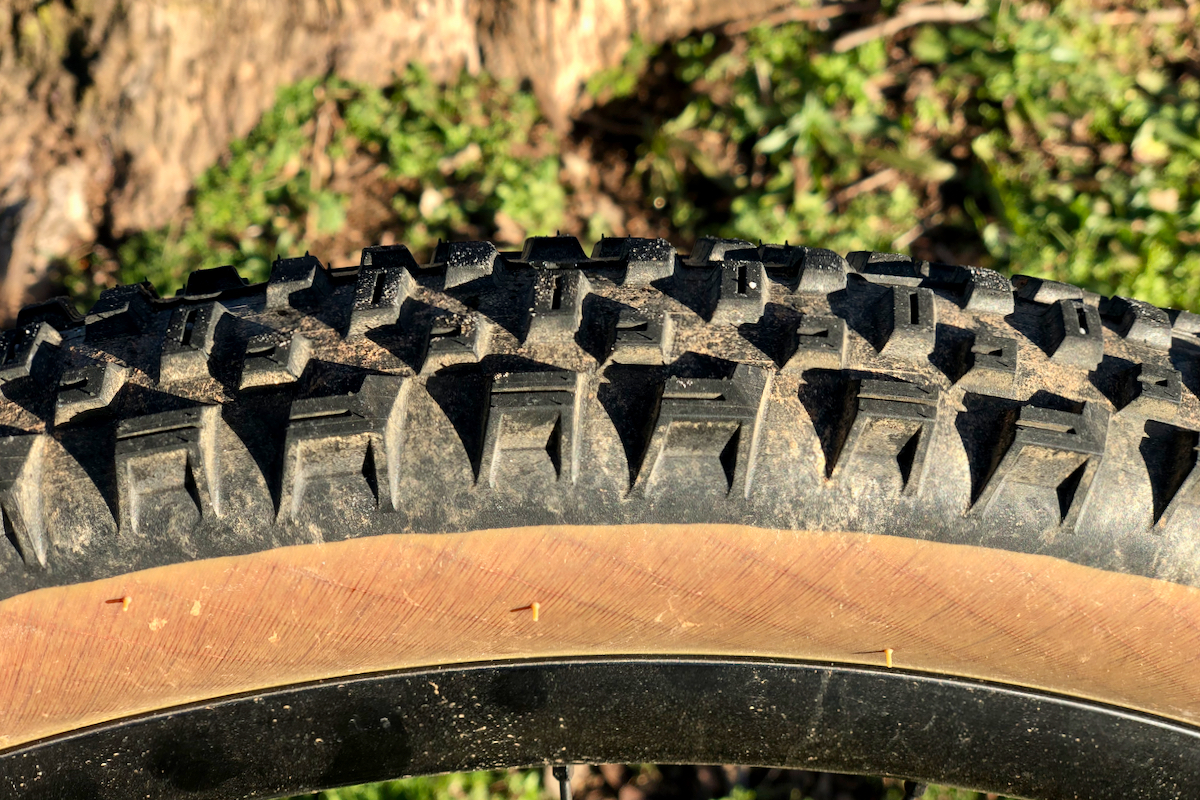

Teravail Honcho
- Price: $65
- Buy from Amazon and other retailers
The Teravail Honcho Light and Supple version isn’t for everyone, but for riders who are light on their feet, it’s an excellent choice. This tire is a fast roller thanks to its light, 895g weight in the 29×2.6″ size, and the somewhat closely spaced center lugs that provide an almost continuous and smooth platform. The Honcho features a single rubber compound which gives it a wallet-friendly $65 retail price.
Read more: Teravail Honcho tire review


Versus All-mountain tire
- Price: <$65
- Buy from Versus Tires
Tested by: Matt Miller
The Versus All-Mountain tires are a great choice for aggressive trail or enduro riders. We didn’t suffer any punctures on the sub-1000g trail casing and found little rolling resistance for long rides. Unique accordion-shaped side knobs hook into the dirt for a distinct feeling of traction around corners and the VRSA woven layer keeps air inside the tire where it’s supposed to be, so riders don’t have to pump them up nearly as often as some others.
Read more: Versus All-mountain tire review
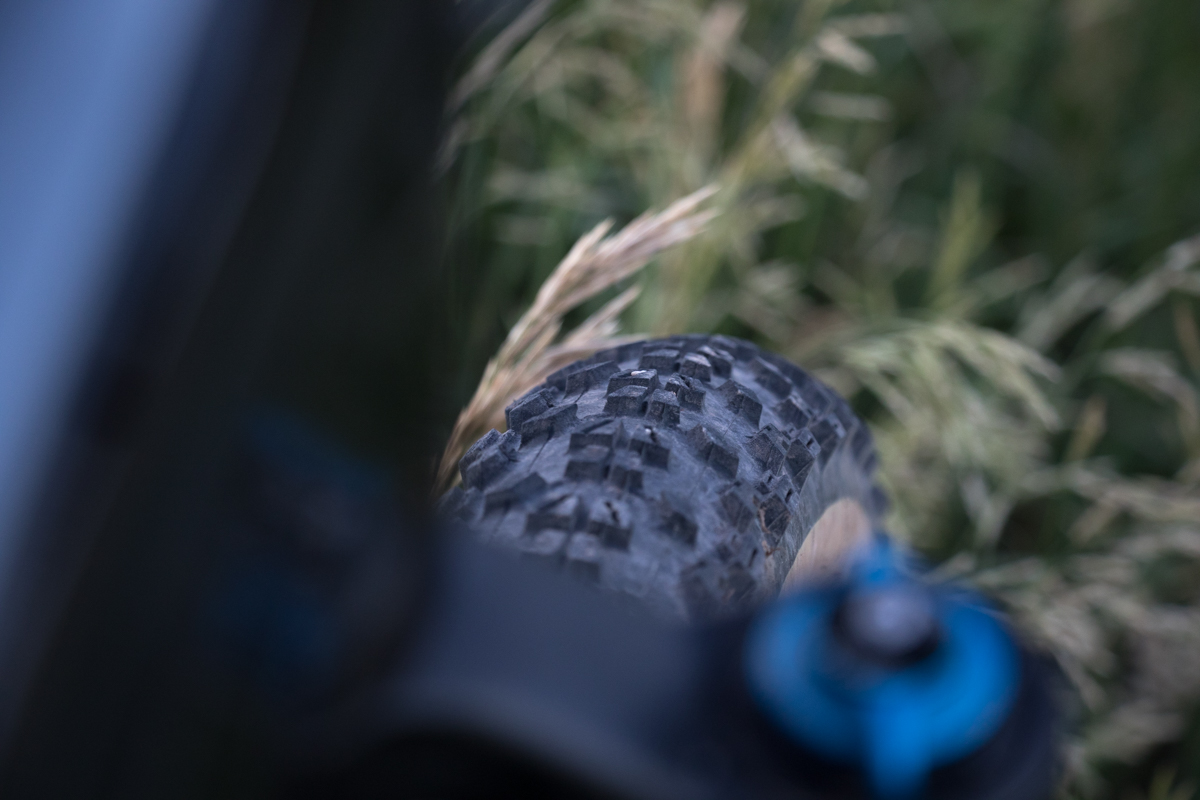
Maxxis Ardent
- Price: $79
- Buy from Amazon and other online retailers
It’s hard to argue with the Maxxis Ardent tire’s worth as a cross-country and trail bike tire. It’s fast, it works as a front and rear tire, and it corners well. The Maxxis Ardent has also been a Singletracks reader favorite tire for a long time. While it may not be the best mountain bike tire for the most technically aggressive rides, it remains a standard for everyday rides and many, many OEM-specced trail bikes. The Race version also cuts some height off the knobs for an even faster mountain bike tire.

Bontrager Gunnison XR
- Claimed weight: 980g
- Price: $49.99 (tested) to $69.99
- Buy from Trek
Product reviewer: Jeff Barber
The Bontrager Gunnison Pro XR is a fine tire for most conditions, and if you’re looking for a tire you can set and forget, this is the one. It’s not the sexiest or most exciting, but it definitely gets the job done. I wasn’t a fan of the Gunnison tire when I first tested the 29×2.6″ version, but after riding the 29×2.4″ version I can say it’s a great mountain bike tire that’s definitely worth a look.
What we like: fast rolling and mid-weight tire; clears debris well; good in most conditions
What we don’t like: tread on the the 2.6-inch-wide version is too spaced out and doesn’t work as well; jack of all trades, master of none
Gravity tires
Gravity tires are designed for bike park riding plus enduro and DH racing. Here you’ll also find tires that are a good choice for riding in wet and/or muddy conditions. Of course there’s nothing wrong with running a gravity tire on your trail or XC bike for added traction and toughness; these tire categories only exist to give an idea about relative differences between mountain bike tires. Mix and match as you like!
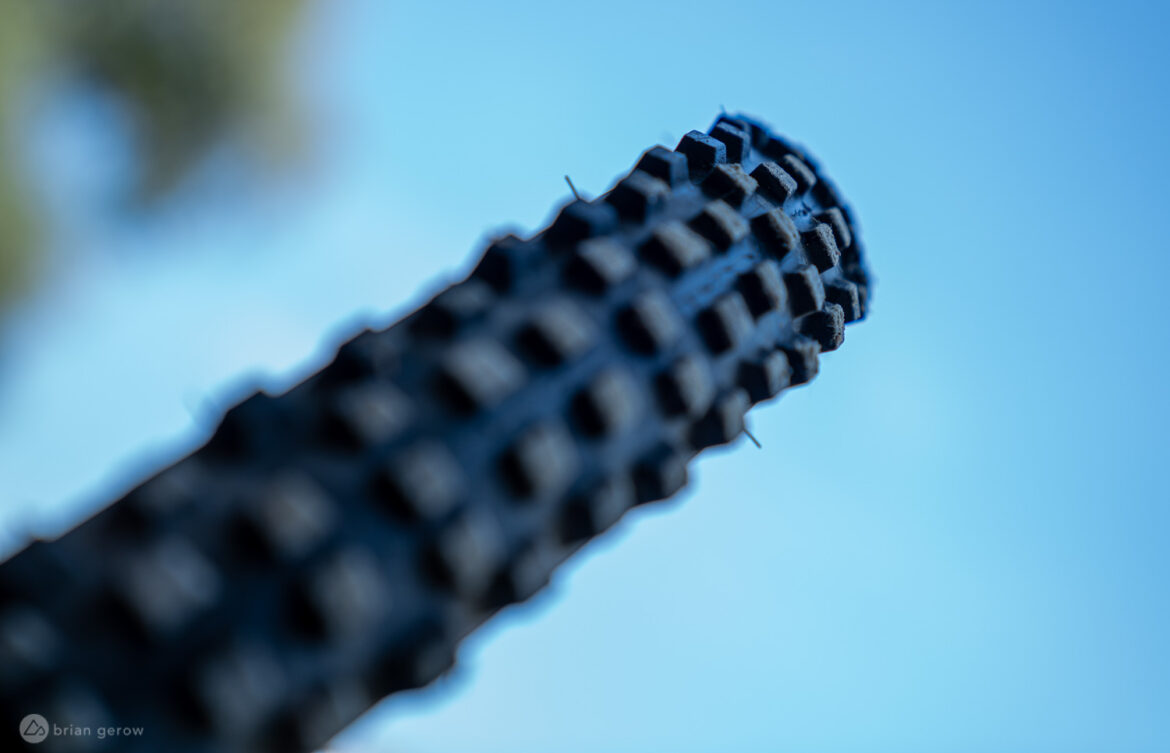


Michelin DH22
- Price: $100
- Buy from Amazon and other retailers
Some folks may think wire bead tires are a thing of the past, but for downhill racing they remain a thing of necessity. The DH22 rubber took a few people and some draconian tubeless-methods to mount up, so there’s no doubt that they won’t burp or slip in a race run. The wire and robust casing culminate in a 1,500g circle that’s no fun to climb with and all fun to descend on.
The Michelin DH22’s quadratic profile and soft rubber help it hook up well in nearly any sort of soil. While slightly less grippy than the softest Schwalbe or Continental tread on the wet stuff, this tire will hold a line on slick roots and rocks where a lot of others slip. Gerow relegated these tires to a race-only pile of tread, as their soft rubber wears quickly and wears him out on climbs. For bike fast park riding and gravity racing, these tires are the ticket.
Read more: Michelin DH22 tire review


Schwalbe Magic Mary
- Price: $92
- Buy from Jenson USA and other retailers
The widely beloved Schwalbe Magic Mary is also one of our favorites. Its all-terrain traction is more versatile and grippier than any other tread bearing that phrase, and it rolls better than a lot of tires with lower traction coefficients. No matter the conditions or the trail character, this tire gets the grip if there is any to be had. It’s even better in slick mud, without noticeably sacrificing rolling speed.
Read more: Schwalbe Magic Mary Tire review


Vittoria Mazza
- Price: $70
- Buy from Backcountry and other retailers
The Vittoria Mazza tire is sure to become a staple in the brand’s line for years to come. Riders today rightly place importance on cornering performance, and the Vittoria Mazza delivers with its robust side knobs and durable sidewalls. It’s consistent in the corners, rarely slipping or losing grip unexpectedly. It may not be the lightest tire out there, but the performance is worth the weight in our opinion.
What we like: Tough tire. Good for cornering and shedding mud.
What we don’t like: A little heavy. Gray sidewalls look tired.
Read more: Vittoria Mazza tire review

WTB Judge SG1
Reviewer: Gerow
- Price: $89.95
- Buy from Worldwide Cyclery
Most comparable to the Maxxis Minion DHR II, the Judge SG1 is a fantastic rear rudder option for gravity riding. It will take a few more calories to pedal uphill than some trail tires, and the DH performance is worthwhile.
What we like: predictable braking traction; great puncture protection
What we don’t like: heavy and expensive
Read more: WTB Judge SG1 tire review
Downcountry, cross-country, and gravel tires
Here you’ll find a wide variety of tires, though the common theme is light weight and low rolling resistance.


Maxxis Forekaster downcountry tire
- Price: $83
- Buy from JensonUSA.
The Maxxis Forekaster is a downcountry tire designed for XC and short-travel trail riding. It’s fast rolling on dry hardpack and pavement yet still delivers decent climbing traction in loose to wet conditions. The supple EXO/TR casing allows the tire to conform well over roots and rocks without feeling too floppy in the corners.
Forekaster seems like an appropriate name given how predictable the latest version transitions into the corners. It took me very little time to get comfortable with leaning the front tire into turns where the Maxxis Forekaster provides excellent cornering support.
What we like: Predictable transition knobs. Good choice for general conditions. Easy roller.
What we don’t like: Heavier and/or more aggressive trail riders will want a burlier casing option.
Read more: Maxxis Forekaster review

Hutchinson Touareg gravel tire
- Price: $65
- Buy from Amazon
The Hutchinson Touareg is a gravel tire, good for gravel roads, bikepacking, or light-duty trail riding, so the knobs are small and closely packed. There are tight, directional knobs running down the center, with offset transitional knobs surrounding the center line, and beefy-for-a-gravel-tire side knobs. The casing is a dual-compound, 127TPI, and tubeless-ready. Hutchinson incorporated their Hardskin textile grid layer for cut resistance from bead to bead.
Read more: Hutchinson Touareg tire review

Teravail Rutland
- Weight: 490g
- Price: $65-80 ($65 as tested)
- Buy from Amazon
If your drop-bar, mixed-terrain rides are mostly gravel and singletrack, the Teravail Rutland is a good buddy to take exploring beyond the ‘hood. Sturdy side knobs allow aggressive cornering while the center knobs roll fast and grip well on climbs.
Read more: Teravail Rutland gravel tire review
What we like: aggressive tread, good puncture protection
What we don’t like: not especially lightweight

WTB Raddler gravel tire
- Price: $65
- Buy from REI.
The WTB Raddler sits at the more aggressive end of the WTB gravel tire line, and is itself a more “rad” version of the most-conditions WTB Riddler tire. The siped outer lugs are downright meaty for a gravel tire while the center tread is made up of shorter, tightly packed knobs for rolling fast. If that sounds like the same recipe for a semi-slick mountain bike tire, it’s not too far off.
Onto gravel, the Raddler is one of the better tires we’ve tested when it comes to soaking up small bumps and vibrations. The tire’s high volume helps, as does the supple 60tpi construction. But what sets the Raddler apart in my opinion is its ability to stick to a line in dodgy conditions. The Raddler feels just as good on chunky, granite-based gravel as it does sandy two-tracks.
What we like: Good volume and aggressive cornering knobs. Holds a line and provides good climbing traction. Little noticeable drag or buzz on pavement.
What we don’t like: Not a lot of puncture protection on 60tpi version.
Read more: WTB Raddler gravel tire review

WTB Venture gravel tire
- Price: $65
- Buy from JensonUSA.
The WTB Venture tire rolls faster than the Raddler but still offers great cornering performance and toughness. The decently thick casing bounces rocks out of the way and isn’t skittish one bit. With tallish cornering knobs and a compact pattern of tightly spaced micro knobs at the center, the Venture almost reminds me of a semi-slick mountain bike tire.
The Venture does a great job floating across sandy washes too, providing a surprising amount of control without wallowing around. Where I really found the Venture to excel over pretty much every other mountain bike tire I’ve ridden is on washboard gravel roads. The 650×47 size, combined with the tire construction, does a crazy good job damping vibration and makes handling a breeze.
What we like: Good vibration damping for gravel riding. Rolls fast and in control. Real cornering knobs.
What we don’t like: Rear traction finds its limit on steep trails. Fine center tread packs with clay.
Read more: WTB Venture gravel tire review.
Fat bike tires
These are the fat bike tires recommended by Singletracks product testers.

45NRTH Dillinger studded fat bike tire
- Price: $234
- Buy from REI
Tire tester: Chris Hrenko
If you’re looking for traction in snow and ice, the studded 45NRTH Dillinger 5 is your best bet. This fat bike tire grips on climbs better than it seems like it should based on how smooth it rolls. The Dillingers float and keep rolling on softer days, and they brake and corner very capably on eye-watering fast descents, in part thanks to improved cornering knobs on the latest versions of the tire. They float over anything floatable, but still have grip on the glazed-up stuff.
Read more: 45NRTH Dillinger fat bike tire review

Terrene Cake Eater
- Price: $120
- Buy from Amazon
Tire tester: John Fisch
The Cake Eater is an excellent choice for anybody who is serious about fat bike racing, just wants the joy of going fast on a fat bike, or needs a tire that will continue to be fun when the snow melts. In this sense, the Cake Eater is aptly named: you can have your fat bike, but you can still eat miles at speed as if on a regular bike. But the analogy does have a limit. If you’re looking to break trail on unprepared surfaces, or don’t mind the extra grunt of pushing through new fluff, a meatier tread pattern may be in order.
Read more: Terrene Cake Eater fat bike tire review.

Maxxis Minion FBF
- Price: $133
- Buy from Amazon
Maxxis has offered a number of fat bike tires over the years, though the Minion FBF is the only one standing. It’s a popular choice on many premium builds today, and riders appreciate the familiar and predictable handling on dry trails in particular. Available in 27.5×3.80 size only.
| Tires | Use | Front/Rear | Weight | Price |
|---|---|---|---|---|
| Teravail Honcho | Trail | Front, Rear | 895g | $65 |
| Versus All-mountain | Trail | Rear | 989g | $63 |
| Maxxis Minion DHF | Trail | Front | 1099g | $82 |
| Maxxis Ardent | XC/Trail | Front, Rear | 818g | $79 |
| Continental Kryptotal | Trail | Rear | 1070g | $65 |
| Bontrager Gunnison XR | Trail | Front, Rear | 980g | $50-70 |
| Specialized Purgatory | XC/Trail | Front, Rear | 995g | $70 |
| Michelin DH22 | DH | Front, Rear | 1500g | $100 |
| Schwalbe Magic Mary | Gravity | Front | 1142g | $92 |
| Vittoria Mazza | Trail | Front, Rear | 1114g | $70 |
| Specialized Butcher | Gravity | Front, Rear | 1300g | $70 |
| WTB Verdict | Enduro | Front | 1257g | $90 |
| WTB Judge | Gravity | Rear | $89.95 | |
| Maxxis Forekaster | XC/Downcountry | Front, Rear | 960g | $83 |
| Hutchinson Touareg | Gravel | Front, Rear | 490g | $65 |
| Terravail Rutland | Gravel | Front, Rear | 490g | $65-80 |
| WTB Raddler | Gravel | Front, Rear | 490g | $65 |
| WTB Venture | Gravel | Front, Rear | 555g | $65 |
| 45NRTH Dillinger | Fat bike | $234 | ||
| Terrene Cake Eater | Fat bike | $120 | ||
| Maxxis Minion FBF | Fat bike | Front | $133 |
Even More Great Mountain Bike Tires
We’re continuing to test mountain bike tires for all disciplines of riding, from gravel and XC to enduro and downhill. If you don’t see a specific tire recommended here, there’s a good chance we’ve reviewed it on this list of mountain bike tire reviews.

Mountain bike tire buyers guide
There are a few things to look at when choosing the best mountain bike tire for your riding style and local terrain. Tires may seem simple but there are actually a number of specs you’ll want to consider.
Tire width
Mountain bike tires are offered in a variety of widths. A wider tire is more stable and is able to roll over obstacles more easily, though it is heavier than a narrower tire. Narrow tires typically offer less rolling resistance so they are better for efficient pedaling.
Depending on a tire’s width, it can generally be classified into one of the following categories:
- Under 2 inches: Gravel and some cross-country tires
- 2.0-2.4 inches: Mountain bike tire
- 2.5-2.6 inches: Wide trail tire
- 2.7-3.2 inches: Plus tire
- Greater than 3.2 inches: Fat bike tire
Wider tires need increasingly wider rims to give them the tire its proper shape. This article explains how to choose the right tire width for your rim width, and vice versa. Aside from rim width, a bike’s frame or fork may limit tire width choices.

Tire knobs
Looking at the knobs on a tire gives a good clue to its intentions. Taller, chunkier knobs are typically found on tires designed for loose and/or technical trail conditions. Shorter, smaller knobs indicate a tire is designed to be fast rolling for gravel and cross-country style riding.
Knob spacing is important to note as well. Widely spaced tire knobs shed mud and debris better than tightly packed ones and can punch through loose soil to find grip on solid ground below. Tires designed for muddy conditions typically have tall knobs with plenty of spacing in between.
Most mountain bike tires utilize different knob shapes and sizes for the center and sides of the tire. Between the center and side knobs there can be transition knobs to prevent abrupt changes in handling as the rider leans the bike to the side and back again.
Some knobs are designed specifically to aid in traction when slowing the bike and are known as braking knobs or braking bars because they are often bar shaped.
A lot of design and engineering goes into tire knob shapes and sizes. Techniques like siping allow the knobs to deform in a specific way to aid in grip. Some riders even modify their tires by adding sipes (basically small cuts) or by trimming knobs to get the performance they desire. Tire brand Schwalbe even produced a tool for the job.


Casing
The tire casing is basically the structure beneath the rubber that gives a tire its shape. Think of it as a fabric woven from threads. These threads are generally made from a synthetic material like nylon or rayon, and most tire brands will list the number of threads per inch (TPI) in the casing material. In a single layer tire, a lower TPI number indicates a stiffer tire since the individual threads are thicker than in a higher TPI tire which is more supple. On mountain bike tires it’s common to see 60 TPI and 120 TPI casing materials used.
Adding additional casing layers makes for a stiffer, more durable tire. The tradeoff is a stiffer tire does not deform to match the terrain as well. To some degree riders can compensate for a too stiff or too supple tire casing by adjusting tire pressures down or up. Unfortunately, not all tire brands communicate TPI ratings and the number of layers the same way, as Lennard Zinn explained to us.
TPI according to Lennard Zinn
“Threads per inch is supposed to be the number of threads per inch in one layer of that casing, but some tire manufacturers, because they know that people don’t buy their tires, because if they know that the threads per inch, they’ll say oh, well they’ll multiply by three because they’ll say well under the tread, it’s seven times three or whatever that is, you know, 200. And so you go like wow, that’s a 200 TPI tire. Well, it’s not apples to apples comparison. So you need to get a sense for looking at the casing and seeing, and you can feel it too. You go into a store and you feel a cheap tire and you just feel the casing feels like compared to a really expensive one for the same application.”
Ken Avery from Vittoria explains tire casings
“Some people actually even call it a carcass, but the casing is really the framework that you build everything off of. And for the vast majority of mountain bike tires, that casing is going to be made out of nylon cloth. And it’s going to be measured in what’s called TPI, which is threads per inch.
“So if you look really up close on a mountain bike casing, you’ll actually see threads. And TPI is just that, the more threads you can fit within an inch on a single layer, the thinner the threads are, which means that they’re more flexible.”
Avery goes on to note that some road bike tires may use cotton threads in their casings, though this is not common for mountain bike tires.
Is a thicker casing better?
Pinch flats occur when either a tube or the sidewall of the tire itself is punctured by an impact with the rim, usually due to a hard landing or running into a square-edged object like a curb. For this reason many riders prefer a thicker casing tire. Over the past several years wheel manufacturers have incorporated wider, less sharp rim edges to help prevent pinch flats.

Do I need to run tire inserts?
A tire insert is a piece of foam that goes in inside a mountain bike tire in between the tire and the rim. It’s designed to help prevent flats and avoid rim damage from big hits. Tire inserts also help add structure to a more supple tire with a “floppy” sidewall casing and can change the way a tire damps and absorbs trail vibrations since it changes the overall air volume of the tire.
While most tire inserts only add minimal weight, they can make installing tires more difficult, particularly on the trail. Some may interfere with tubeless valves as well.
Rubber compounds
If tire casings are like carbon fiber, the rubber compound is like the resin that fills out the shape of the finished product. Rubbers are rated by hardness using a number called durometer. A lower durometer number is a softer, stickier material that grips well but also wears quickly. A higher durometer rubber is stronger and lasts longer but doesn’t grip as well. Tire designers often try to choose a rubber compound that offers a compromise between the two.
One way to get the best of both worlds — a grippy tire that is also long lasting — is to design a dual or even triple compound tire. Dual compound tires place a harder, longer-lasting rubber along the center of the tire tread and a softer, stickier rubber on the sides which aren’t used as often. The upshot is excellent grip for cornering and a tire that won’t wear out as quickly. Triple compound tires can use a third compound as a base layer to achieve specific rebound and damping characteristics.
Natural rubber starts out tan in color and carbon is added to make the material stronger and longer lasting. The carbon is also what gives tires their black color; tan wall mountain bike tires show off a tire’s natural rubber color.

Tire bead
The tire bead is the inside edge of the tire that mates with the rim. Most mountain bike tires utilize a folding bead, usually made from Kevlar, and some gravity-oriented tires use a more rigid wire bead.
Tubeless-ready and tubeless tires
Most, though not all, mountain bike tires are marketed as tubeless compatible or tubeless ready. Generally this means the bead has been designed to form a strong seal with the rim. Avery from Vittoria says, “tubeless-ready beads have a much sharper bead shape that’s much more square, rather than that traditional teardrop shape that you would just get if you wrapped a piece of material around a wire. And that’s made to really lock in and hold the pressure and also create an airtight seal.”
Can I run a tubeless tire on a non-tubeless rim?
Yes. However the reverse is not always true. You may not be able to mount a non-tubeless tire on a tubeless rim.
Puncture protection
Casing design plays a role in puncture protection, and some tires even have an extra layer specifically to resist against sharp objects like thorns and rocks in the trail. This can add to the weight of the tire significantly. Using a quality tubeless tire sealant goes a long way toward preventing most punctures.
Rolling resistance
Rolling resistance refers to the amount of drag a tire produces while riding. Calculating a tire’s rolling resistance is complicated, making it difficult to compare between tires. Lennard Zinn filled us in on the four main factors that influence rolling resistance — tire pressure, casing, compound, and tread design — in a podcast interview.
“The casing is really critical, because, you know, it’s cheaper to make a tire with much thicker threads and and the cord. The carcass of the tire, you know, it’s listed in TPI, threads per inch. So if you have a low TPI, it means that those threads are fat, because if they’re stacked, right next each other, not very many threads are going to fit in one inch. That means the thread is stiffer, and thicker so it’s going to be stiffer. So as that casing encounters a bump, if the threads can’t move properly with the casing, the casing is stiffer, which means that it will force the entire bike and rider up. It it were a more supple one with much thinner threads in the casing, it will be able to absorb — assuming the same tire pressure — more of that bump, and it will lift the rider less. Obviously the more you lift the bike and ride it, that was energy — except when you’re going downhill — when you’re going uphill or flat, that energy came out of the rider’s legs.”
What is the recommended pressure for mountain bike tires?
Mountain bike tire pressure is generally measured in pounds per square inch (psi) or kilopascals (kPa). Finding the right tire pressure for mountain biking depends on your body weight, riding style, and even trail conditions. This article provides a good starting point for mountain bike tire pressure settings which you can then fine tune to suit your preferences. Generally speaking, mountain bike tire pressures range between 10psi and 30psi, though they can go even higher or lower in extreme cases.
How long do mountain bike tires last?
Some mountain bike tires are designed to last for an entire season or more, while others are designed to last for just a single race. How long your tires last will depend on the following:
- The rubber compound. Softer compounds are stickier and provide more grip, but they were down more quickly.
- The terrain. Hard, abrasive terrain will wear tires more quickly while soft, loose ground is not as hard on tires.
- How many miles you ride. It’s not about how long you’ve owned a tire, it’s how much you’ve ridden it!
So how do you know when it’s time to replace a mountain bike tire? Obvious signs of wear include visible threads poking through the rubber, cracked or missing knobs, or a lack of tread. There’s no standard measure for tread depth because each tire is different, so if you notice a tire is losing traction often, that’s a good sign that the knobs are significantly worn. If you have any holes in the sidewall or the bed is torn, you’ll want to replace the tire as soon as possible.






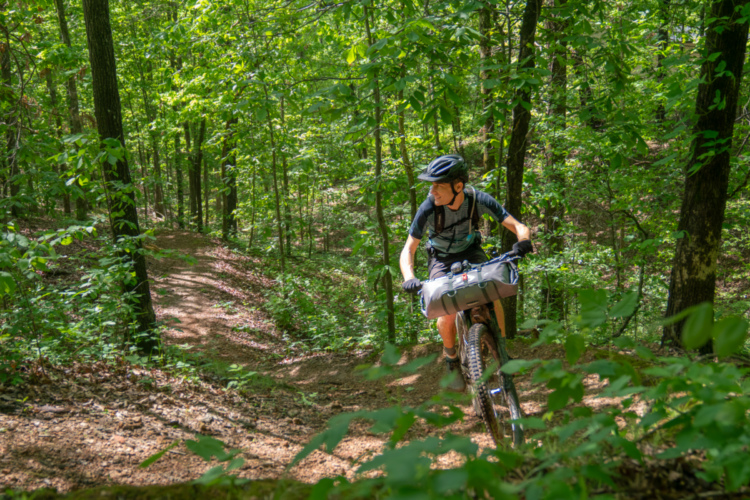
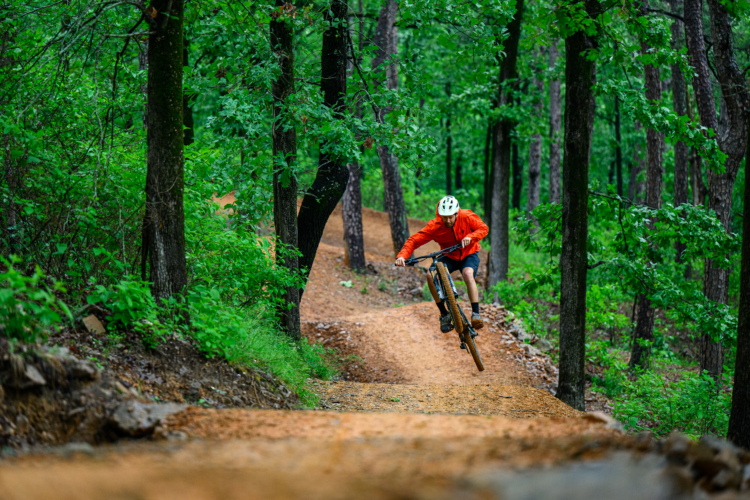
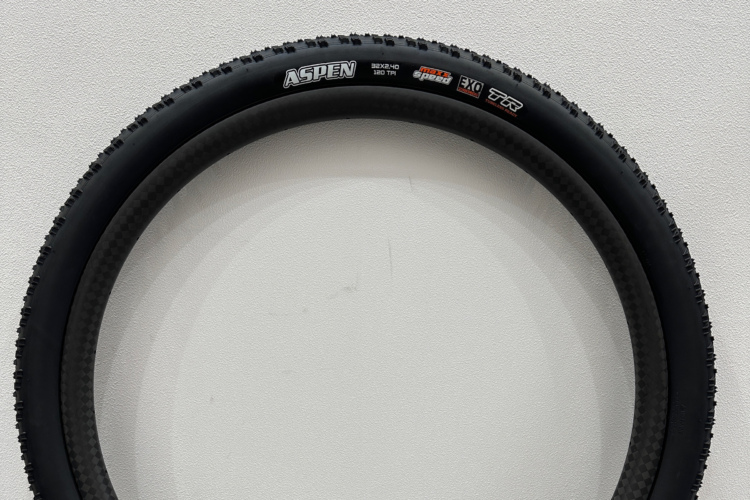
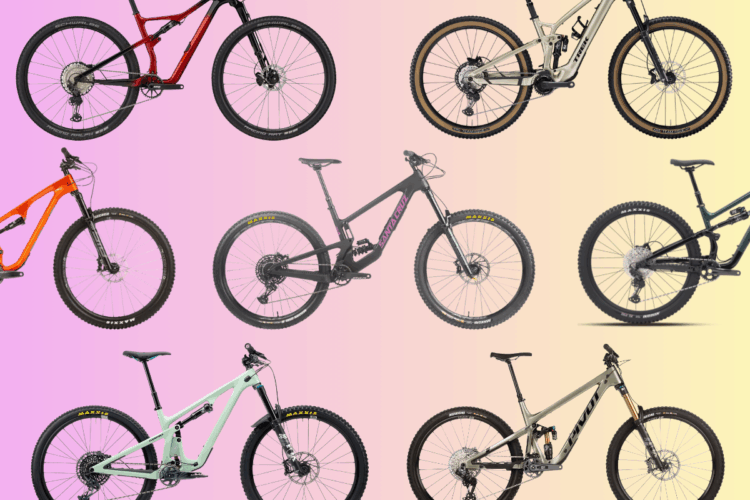

24 Comments
Oct 9, 2020
Dec 7, 2017
Dec 8, 2017
Dec 7, 2017
The High Roller being so high is purely because it comes stock on soooooo many bikes and people vote for and buy what they know. Most people don't experiment much and get stuck in a rut. I had 2-3 friends that were running the old Nevegals because that's all they knew from the Nevegal glory years. Once they tried something new, they never went back. One now runs E13 tires and the other two are Schwalbe Nobby Nic homers.
Dec 7, 2017
Dec 8, 2017
Dec 4, 2017
Dec 4, 2017
Dec 4, 2017
Oct 17, 2016
Oct 19, 2016
Dec 28, 2016
Oct 17, 2016
Oct 19, 2016
Oct 19, 2016
One of my personal favorites is the Specialized Captain tire. It rarely "steers" me wrong.
Mar 17, 2017
Oct 19, 2016
Round 1:
1. Maxxis
2. Maxxis
3. Maxxis
Round 2:
1. Specialized
2. Specialized
3. Hutchinson
Round 3:
1. Maxxis
2. Maxxis
3. Maxxis
Round 4:
1. Maxxis
2. Specialized
3. Specialized
Round 5:
1. Maxxis
2. Maxxis
3. Maxxis
Round 6:
1. Maxxis
2. Maxxis
3. Specialized
Round 7:
1. Maxxis
2. Maxxis
3. Specialized
World Championships:
1. Maxxis
2. Maxxis
3. Schwalbe
Final tally:
Maxxis - 16 podium spots (67% of the time)
Specialized - 6 podium spots (25% of the time)
Hutchinson - 1 podium spot (4.2% of the time)
Schwalbe - 1 podium spot (4.2% of the time)
So, even by your criteria, Maxxis comes out on top.
Mar 17, 2017
Oct 23, 2016
Oct 19, 2016
Oct 5, 2020
Oct 8, 2020
Oct 5, 2020
Oct 5, 2020